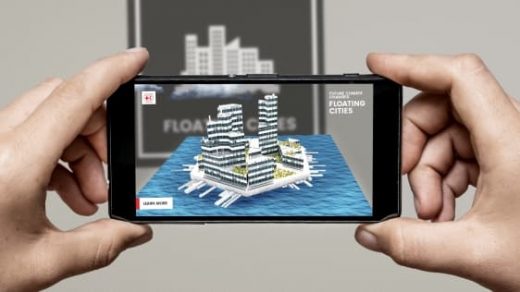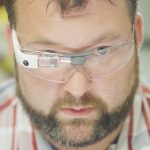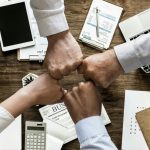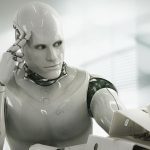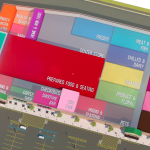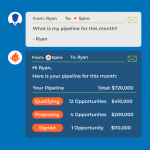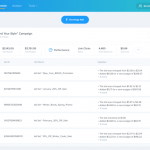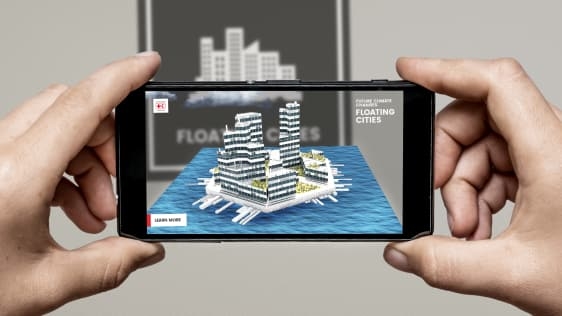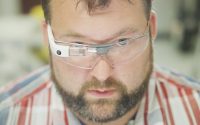Beyond Survival Kits: Humanitarian Aid Is Going Wireless, Communal, And Autonomous
2017 set the record for costly devastation brought about by natural disasters globally. While our discussions about such events often concentrate on the pain and destruction they bring, we also see that these moments can bring about the best of humanity. In the aftermath of Hurricane Maria, for example, chef Jose Andres set up a network of kitchens that served millions of hot meals to Puerto Ricans. In Mexico, a group of 25 social organizations created a Google Crisis Map and took to social media directing updates on where help was most needed after the earthquake toppled buildings there. When Hurricane Matthew engulfed Haiti, it was the Digital Humanitarian Network that activated a bridge between professional humanitarian organizations and volunteer networks.
These amazing responses pose an interesting question: Do citizens want to respond to humanitarian events independent of large aid organizations or governments? In a more globalized world, are the needs of the citizens impacted by disaster more complex? Do they no longer fit the traditional approaches and assumptions that aid organizations tend to operate in?
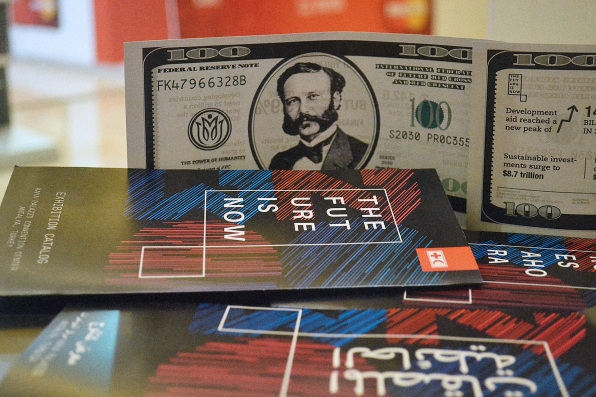
Just like every other industry, the international aid and development sector is being disrupted by the vast global transformations that are occurring all around us. This has prompted the International Federation of Red Cross and Red Crescent Societies (IFRC) to ask pivotal questions about its own relevance and whether it is fit for to address the next type of emergency, and the unique environment in which it will occur. In our new exhibit, The Future Is Now, we looked at a broad range of strategies to address these questions, in order to imagine scenarios in which the Red Cross much more effectively responds to those that are made vulnerable as a result of disasters, poverty, and inequality. Part of our analysis has resulted in the experiential scenarios and guerrilla artifacts you see here.
The aim is not to predict the future (as one can’t!) but rather, to understand the complex contexts in which change is happening. We aren’t just presenting future scenarios of humanitarian need, but rather a holistic view of what society might look like, what people would want, need, and how they would interact each other in the decades ahead. This is a subtle but clear delineation again from how humanitarian futures thinking has traditionally been done.
When we started the design for this exhibit, we faced skepticism. These installations can seem too far removed from everyday reality for such a practical, hands-on organization. So it was essential that the proposals weren’t too ‘out there,’ but could be understood in the contexts that our people operate in — and pushed us to consider the possibilities of the future, regardless of whether any of these scenarios do turn into reality.
Citizenship Kit (Changeist, 2017)
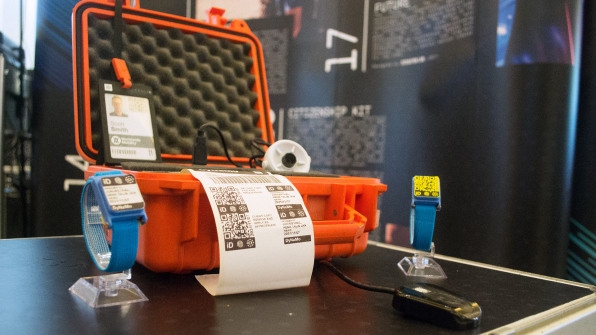
This scenario hypothesizes single-use dynamic temporary citizenship.
The Citizenship Kit builds on a steady upward trend in political and climate-driven disruption, resulting in hundreds of thousands unable to remain in their home states. The framework for dynamic national mobility (DyNaMo) builds on the precedent and practice of successful long-term e-residency programs developed by Estonia in the 2010s. It allows displaced individuals to gain digital-legal “citizenship”–though not necessarily rights to physical residency. The Kit places between 2,000 and 50,000 people into a pool for temporary legal “citizenships” and provides a means of extending local legal and welfare systems for up to 120 days to those displaced from countries under meaningful threat from war, genocide or non-voluntary resettlement due to a natural disaster or other significant cause.
These temporary “citizenships” are extended solely for the purposes of enabling delivery of financial, medical or other critical assistance that could only be supplied under cover of an appropriate national safety net. Similar to the way internet addresses or prepaid mobile numbers are assigned dynamically, these temporary citizenships can be assigned in the field by trained relief workers, then expired and returned to the pool in 120 days or earlier as deemed by the issuing country or relief body. Protection and benefits are only delivered in the field or in approved third-country transit, and are not useable for actual resettlement in the issuing country, though they do provide a special category of humanitarian consideration should the recipient wish to apply for resettlement in the issuing country.
The benefits of this include not only the ability to provide different kinds and levels of protection and relief that are situation- or location-specific, but also allows issuing countries to better control emergency migration and aid delivery without over-burdening its own capacities to respond.
DONAID (Superflux, 2017)
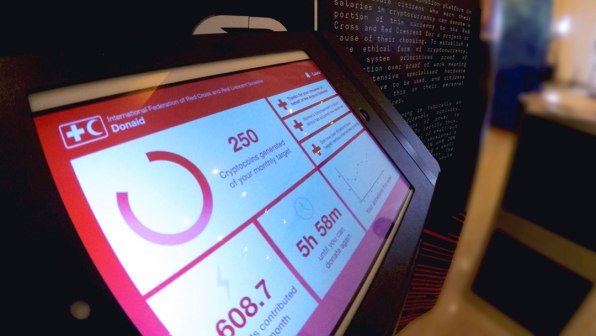
This scenario hypothesizes a future in which cryptocurrencies have replaced all traditional forms of money. DONAID is a donation platform in which citizens earn their salaries in cryptocurrency and a portion of salaries are automatically donated to a project or cause of their choosing. The portion of salary donated is derived from cryptocurrency mining, which is an essential component of their salary transaction process. Through this component, citizens can choose to donate to Red Cross Red Crescent programs directly without going through an intermediary.
Cryptocurrency mining is typically an environmentally unfriendly activity, consuming vast amounts of power to generate the currency. To rectify this, DONAIDs’ model is based on small but frequent currency generation sessions. A user would dedicate between 1% and 20% or 1 – 20 mins of power to mine a small amount of cryptocurrency per day. The created “coins” or money would then be donated to the Red Cross Red Crescent. Extensive specialized hardware does not need to be used and citizens process this on their own personal devices, enabling a much more efficient and effective transaction.
RC Voluntair (Superflux, 2017)
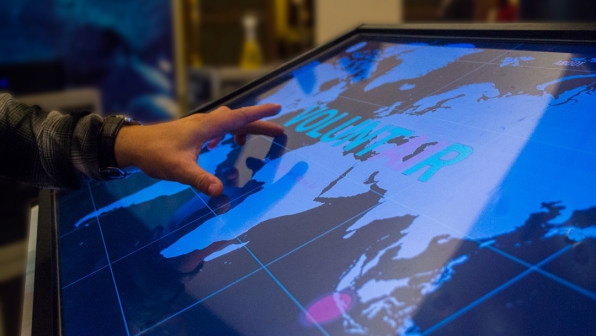
What if artificial intelligence completely took over all jobs and organizations were run by algorithms and not humans? Can algorithms make ethical decisions about where aid resources are allocated and where?
RC Voluntair hypothesizes a future Red Cross organization that is wholly virtual. No physical office exists, and neither do traditional job functions. This future Red Cross organization is an advanced algorithm that independently manages a global network of newsfeeds, data sets, aid workers and volunteers to anticipate and allocate aid and relief resources where and when they are needed most. Volunteers are indexed by their skill sets and geolocation and can be called upon by the system to quickly and efficiently respond to emerging situations. Traditional job functions no longer exist and have been replaced by automated processes and decision making.
The powerful machine-learning system enables Red Cross and Red Crescent Societies to employ predictive distribution strategies placing aid infrastructure before natural disasters and crises strike.
Floating Nations (Edge DNA, 2017)
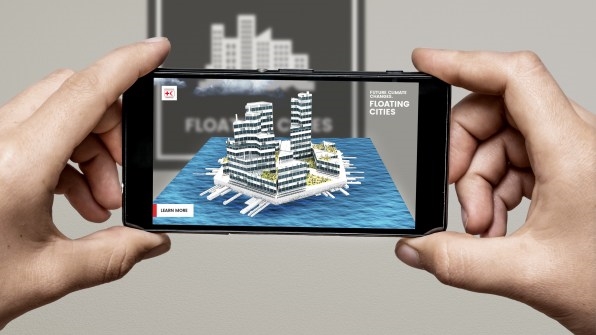
This scenario hypothesizes a future where climate change impacts have made arable land and water increasingly scarce. Thus, entirely new countries or cities are created on floating islands as a solution to rising sea levels that have driven entire populations living on coastlines, edge of drylands, and urban floodplains away from their homes permanently.
These new floating nations have entire systems for housing, farming, and manufacturing on them to sustain their citizens for years. It utilizes natural resources including sun, wind, and waves for energy self-sufficiency and has entirely new governance models in place.
New World Times 2030 (Open Lab at Newcastle University and IFRC)
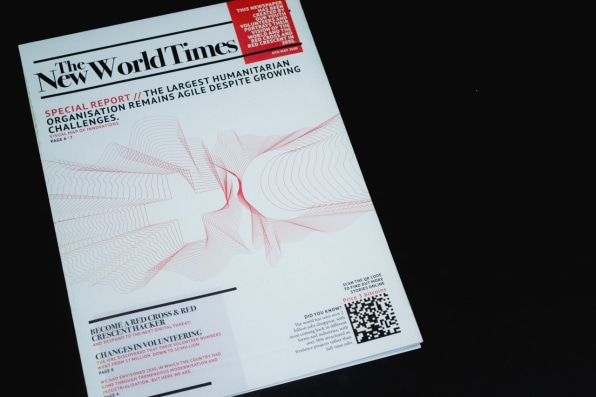
In 2017, more than 4,000 Red Cross youth volunteers across 120 countries played a global, multiplayer online game for 10 days: WhatFutures. The game was played entirely on WhatsApp and used simulations to gather the perspectives and voices of the young person on what their vision of the future was for themselves and their friends and family.
What they want to inherit is a world that has artificial blood, 3D printed building, autonomous policing, humanitarian drones, microgrids, and a new world map. We turned their winning submissions into a Newspaper from the Future – entirely imagined by them.
Are we fit for this future?
Aarathi Krishnan works in humanitarian futures & foresight and innovation with the International Federation of Red Cross and Red Crescent (IFRC) and is based in Geneva. She has a background in development program management and policy, and spent a lot of her early career working across Africa and Asia. Currently Aarathi leads the futures and innovation portfolio in IFRC and alongside her team, is developing the Solferino Academy, a futures think and do tank initiative of the Red Cross Movement.
Fast Company , Read Full Story
(22)

